#national gallery of scotland
Explore tagged Tumblr posts
Text

William Hogarth
Sarah Malcolm (died 1733)
Portrait of Sarah Malcolm, who was executed two days after Hogarth sketched her for murder.
Sarah Malcolm was executed in 1733 at the age of 25 for the murder of her mistress Lydia Duncomb and two fellow servants. Malcolm denied having any part in the killing but was found guilty and sentenced to hang. Hogarth sketched her in Newgate Prison in London two days before her execution on 7 March at Fleet Street. Hogarth then went on to make this painting and an engraving, that was popular due to her notoriety.
Scottish National Gallery
#english imagination#art#english art#english painter#william hogarth#Sarah Malcolm#portrait#painting#Scottish national gallery#national gallery of Scotland
5 notes
·
View notes
Text
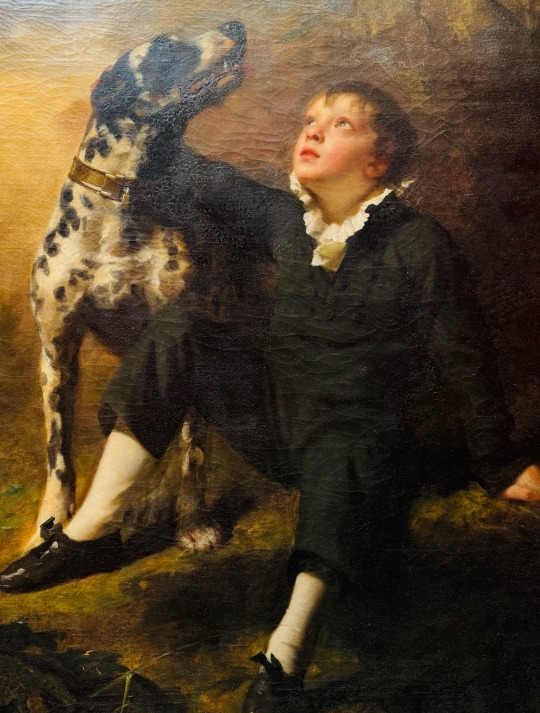
A boy and his dog
Sir Henry Raeburn
John Stuart Hepburn Forbes, later 8th Baronet of Monymusk, and of Fettercairn and Pitsligo, 1804 - 186
National Galleries of Scotland
c 1812
#found#art#dogs in paintings#dogs of tumblr#dogs#dogs in art#dalmatian dog#boy and his pet#portrait#19th century#scotland#national gallery of Scotland#scottish art#scottish artist
5 notes
·
View notes
Text

George I, 1660 - 1727. Reigned 1714 - 1727
Artist: Unknown
Date: Unknown
Medium: Oil on canvas
Collection: National Gallery of Scotland, Edinburgh, Scotland
Description
George I (28 May 1660 – 11 June 1727) was King of Great Britain and Ireland from 1 August 1714 and ruler of the Electorate of Hanover within the Holy Roman Empire from 23 January 1698 until his death in 1727. He was the first British monarch of the House of Hanover.
#portrait#george i of great britain#full length#coronation robes#table#crown#british royal family#house of hanover#oil on canvas#artwork#fine art#british history#oil painting#national gallery of scotland
6 notes
·
View notes
Text
The extraordinary, ethereal art of Remedios Varo
A brief, image-led look at the work of Remedios Varo, a Spanish painter famed for her surrealist artworks
1 note
·
View note
Text
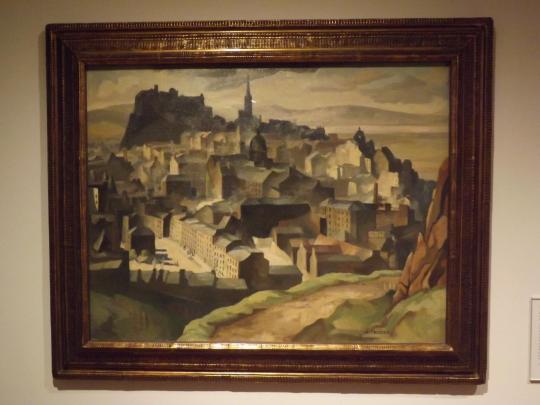
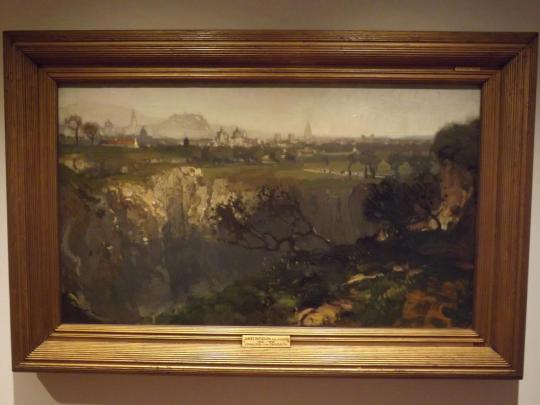
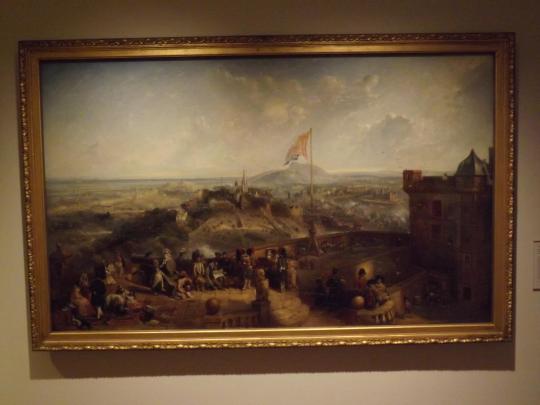

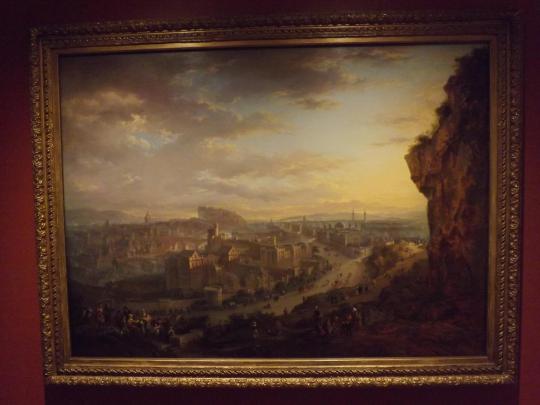

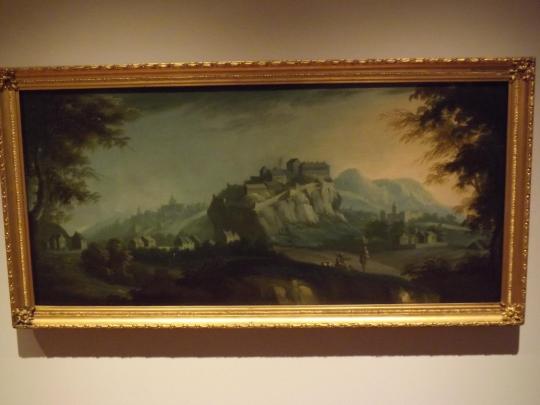
These photos are actually from a couple of weeks ago, but I never got around to uploading them. The national gallery here recently finished a big renovation, opening up some new spaces downstairs to have a section dedicated to Scottish art. I especially liked the various cityscapes on Edinburgh on display; they feel like period pieces now, but were pretty contemporary when they were painted and make for an interesting little time capsule of how much the city has changed (and how much it hasn't).
1 note
·
View note
Text

The White Drake. Joseph Crawhall. Scottish. 1895.
National Galleries of Scotland.
#Joseph crawhall#scotland#Scottish#scottish history#modern history#art#culture#1800s#national galleries of scotland#painting#animals in art#duck#ducks#birds#bird
785 notes
·
View notes
Text

Lady Agnew of Lochnaw (1892) 🎨 John Singer Sargent 🏛️ National Galleries Scotland 📍 Edinburgh, Scotland
Sargent’s dazzling and unforgettable image of Lady Agnew is one of the most famous of his many portraits of fashionable London society. For both the artist and his sitter, the painting was an instant success, establishing Sargent’s reputation as the portrait painter of choice for the London elite and immediately transforming the newly elevated Lady Agnew into a society celebrity.
Sargent was born in Florence and spent his childhood travelling across Europe with his wealthy American parents who restlessly followed the changing social seasons. In 1874 he entered the Paris studio of the stylish French portraitist, Carolus-Duran. The young Sargent combined the flamboyant style of his teacher with his study of old masters such as Rembrandt and Velázquez but was also influenced by Monet and Impressionism. His provocative and unconventional Portrait of Madame X caused a scandal at the Paris Salon exhibition in 1884; and, when Sargent settled in London in 1886, he initially found it difficult to find clients as his bravura, continental style of painting attracted suspicion. However, his dashing technical mastery and confident manner were ideally suited for aristocratic patronage and he soon won over his critics with his elegant, flattering portraits. When his portrait of Lady Agnew was shown at the Royal Academy in 1893, one contemporary observed: ‘London is at his feet … he has had a cracking success.’
The sitter was born Gertrude Vernon and married Andrew Noel Agnew in 1889. Her husband, fifteen years her senior, was a barrister and later an MP and deputy-Lieutenant in Wigtownshire; he succeeded his father as 9th Baronet of Lochnaw in 1892, shortly before Sargent embarked on this portrait. The exact circumstances behind the commission are not known, but the Agnews may have met the artist through mutual American friends. According to notes in her husband’s diary, work on the portrait progressed swiftly, and Sargent later recalled that it was painted in just six sittings.
Lady Agnew is shown seated in a Louis XVI chair against the backdrop of a Chinese silk hanging, both of which were standard props in Sargent’s studio. She is reported to have been of frail health; she recovered slowly from a severe bout of influenza in 1890 and was apparently still convalescing and suffering from exhaustion when she sat to Sargent, which may account for her slightly ghostly pallor in the painting. Lady Agnew fixes the spectator with an intelligent, faintly amused gaze but it is her elegant white silk dress and lilac sash that threaten to steal all our attention. There are brilliant passages of painting in the highlights, reflections and coloured shadows that show Sargent at his best as a painter of surfaces and textures, the ideal artist for a gilded, polished yet ultimately superficial society.
Sargent’s image of Lady Agnew helped her to become a leading light in fashionable circles, holding lavish salons in her London home. Ironically, the high costs of this hospitality meant that she was eventually forced to sell some family pictures including this portrait which was purchased by the Scottish National Gallery in 1925.
#Lady Agnew of Lochnaw#John Singer Sargent#oil painting#painting#oil on canvas#portrait#1892#american#Gertrude Agnew#National Galleries Scotland#Edinburgh#Scotland#art#artwork#art history
269 notes
·
View notes
Text
#Caturday 😺:

Agnes Miller Parker (Scottish, 1895-1980) Siamese Cat and Butterfly (Greetings Card) Printed 1939 Color wood engraving on folded card 13 x 10.4 cm (image), folded card 18 x 14 cm (folded out size: 18 x 28 cm) National Galleries of Scotland GMA 3057 "Miller Parker produced numerous commercial prints featuring Siamese cats, including this one. Her cats were often accompanied by other creatures or plants including birds, butterflies and flowers, revealing the animal's natural sense of curiosity. Many of her prints were based on the countless studies she made of her own pets, though few of these drawings survive today."
#animals in art#20th century art#european art#Scottish art#Agnes Miller Parker#wood engraving#greeting card#cat#Caturday#Siamese Cat#National Galleries of Scotland#British art#butterfly#print#1930s#women artists#pet portrait
45 notes
·
View notes
Text

Christ Taking Leave of His Mother
Artist: John Runciman (Scottish, 1744-1768)
Date: Mid 1760s
Medium: Oil on mahogany panel
Collection: National Galleries of Scotland, Edinburgh, Scotland
Christ Taking Leave of His Mother
“Christ Taking Leave of his Mother”, which forms the prelude to the events of the Passion of Christ, is first reported in writings of the late Middle Ages. Before his suffering began, Christ is said to have met his mother one last time – together with Mary Magdalene, Mary of Clopas and Mary Salome – in front of Lazarus’s house.
#painting#artwork#fine art#christianity#landscape#cottage#jesus#mary#human figures#women#christ#mountains#foliage#scottish culture#lazarus' home#mary magdalene#mary of clopas#mary salome#scottish painter#john runciman#scottish art#european art#oil painting#oil on wood#18th century painting#national galleries of scotland
22 notes
·
View notes
Text

Ariel and Caliban
Artist: David Scott (Scottish, 1806-1849)
Date: 1837
Medium: Oil on canvas
Collection: National Galleries of Scotland, Edinburgh, Scotland
Ariel (The Tempest)
Ariel is a spirit who appears in William Shakespeare's play The Tempest. Ariel is bound to serve the magician Prospero, who rescued him from the tree in which he was imprisoned by Sycorax, the witch who previously inhabited the island. Prospero greets disobedience with a reminder that he saved Ariel from Sycorax's spells, and with promises to grant Ariel his freedom. Ariel is Prospero's eyes and ears throughout the play, using his magical abilities to cause the tempest in Act One which gives the play its name, and to foil other characters' plots to bring down their master.
Caliban (The Tempest)
Caliban, the subhuman son of the sea witch Sycorax, is an important character in William Shakespeare's play The Tempest.
Caliban is half human, half monster. After his island becomes occupied by Prospero and his daughter Miranda, Caliban is forced into slavery. While he is referred to as a calvaluna or mooncalf, a freckled monster, he is the only human inhabitant of the island that is otherwise "not honour'd with a human shape".
#painting#literary art#oil on canvas#william shakespare#the tempest by william shakespeare#ariel#island#caliban#spirit#slavery#fine art#scottish culture#artwork#oil painting#art and literature#scottish art#literary characters#scottish painter#david scott#european art#19th century painting#national galleries of scotland
21 notes
·
View notes
Text

Hindoo Architecture - A Composition
Artist: David Roberts (Scottish, 1796-1864)
Date: 1829
Medium: Oil on panel
Collection: National Galleries of Scotland, Edinburgh, Scotland
#painting#hindoo architecture#composition#oil on panel#fine art#landscape#india#architecture#men#hindoo#david roberts#scottish painter#scottish art#vertical landscape#oil painting#19th century painting#european art#national galleries of scotland#artwork#19th century art
36 notes
·
View notes
Text

Queen Adelaide, 1792 - 1849. Princess Adelaide Louisa Theresa Caroline Amelia of Saxe-Meiningen. Queen of William IV
Artist: Sir David Wilkie (Scottish, 1785-1841)
Date: c. 1833
Medium: Oil on canvas
Collection: National Galleries of Scotland, Edinburgh, Scotland
Description
Princess Adelaide of Saxe-Meiningen was born in Germany. At the age of twenty-five she was married to the fifty-two year old William, Duke of Clarence. The duke was the third son of King George III and next in line to the British throne after his brother, George IV, who had no heir. The duke had fathered ten illegitimate children by an Irish actress, and his marriage to Princess Adelaide was intended to produce legitimate offspring. Though their marriage was happy, the couple’s two daughters died in infancy. After her husband’s accession to the throne as King William IV in 1830, Queen Adelaide’s supposed interference in politics made her unpopular with the British public. However, after her husband’s death, Adelaide’s reputation was restored by her generous donations to charity.
#portrait#equestrian#painting#queen adelaide#queen of hanover#queen of the united kingdom of great britain#oil on canvas#oil painting#fine art#queen consort of the united kingdom#british history#historical portrait#historical art#white horse#costume#hat#veil#scottish culture#scottish art#sir david wilkie#scottish painter#european art#19th century painting#national galleries of scotland
26 notes
·
View notes
Text

Baronne Madeleine Deslandes
Artist: Edward Burne-Jones (English, 1833-1898)
Date: 1895-1896
Medium: Oil on canvas
Collection: National Gallery of Victoria, Melbourne, Australia
Description
Baronne Madeleine Deslandes (1866–1929) was an accomplished novelist who moved in literary and artistic circles in Paris. She was hostess of a busy salon that attracted many Symbolist artists, poets and composers, such as Gabriel Fauré, Jean Lorrain, Robert de Montesquiou, Jules Bois and Oscar Wilde. A firm enthusiast for the English Pre-Raphaelite style, and a particular advocate of Edward Burne-Jones’s art in France, the Baronne had lobbied the artist, a somewhat reluctant portraitist, to create her likeness during a visit she made to England in 1893. The Baronne perceived herself as something of a visionary, and Burne-Jones has made reference to this self-awareness by placing a laurel tree (a traditional emblem of prophecy) behind her, and a crystal ball on her lap. This may also account for the formal qualities of this work – the rather rigid pose of the sitter and her very serious, inwardly reflective and sensitive facial expression.
#portrait#author#baronesses#painting#oil on canvas#pre raphaelite brotherhood#oil painting#fine art#english culture#woman#blue#three quarter length#madeleine deslandes#visionary#english art#female portrait#edward burne jones#french painter#pre raphaelite movement#english painter#european art#19th century painting#national galleries of scotland
22 notes
·
View notes
Text

David Allan, 1744 - 1796. Artist (Self-Portrait)
Artist: David Allan (Scottish, 1744-1796)
Date: 1770
Medium: Oil on canvas
Collection: National Galleries of Scotland, Edinburgh, Scotland
Description
David Allan painted this self-portrait during his stay in Rome from 1767 to 1777, a very successful period in his early career. He has depicted himself as a gentleman-connoisseur in a grand Roman apartment, which is unlikely to have been his actual home at the time. Porte crayon in one hand, he looks away from his drawing of the view from his window and stares at the viewer. Falling off the table is another work, a copy after Agostino Carracci’s Venus fresco in the Farnese Gallery in Rome. Here, Allan alludes to his study of old masters, something which was deemed an essential part of an artist’s education. This self-confident portrait shows the young artist already at the height of his powers and yet full of ambition.
#self portrait#painting#rome#interior scene#porte crayong#gentleman#full length#seated#cloth#canvasses#costume#roman architecture#oil on canvas#artwork#fine art#oil painting#scottish painter#fresco#table#scottish art#national galleries of scotland#european art#18th century painting
21 notes
·
View notes
Text
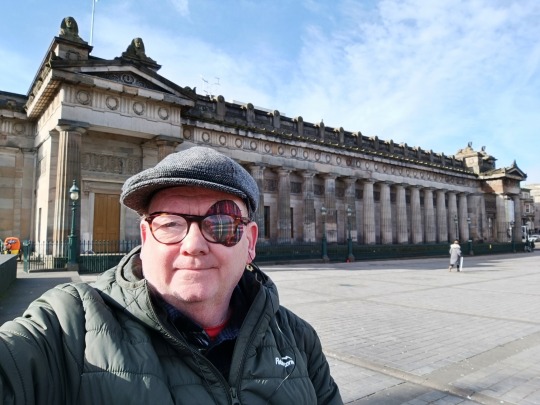
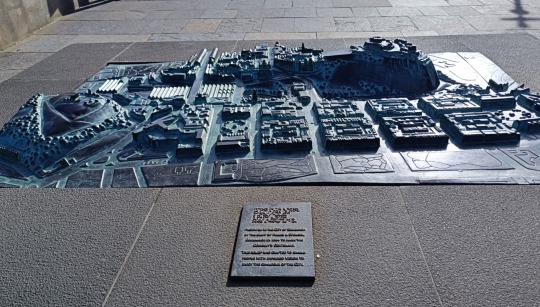


Very spring-like day in Edinburgh.🌞
#scotland#scottish#history#edinburgh#The Mound#RSA#National Galleries of Scotland#Princes Street Gardens#Scott Monument#Balmoral Hotel#my pics
85 notes
·
View notes
Text

Dog on Steps by Charles Reid(1837 - 1929). Scottish.
National Galleries of Scotland.
#national galleries of scotland#Charles Reid#photography#art#culture#history#modern history#animals in art#dog#dogs#scottish#Scotland#scottish history
18 notes
·
View notes